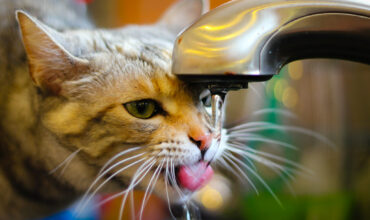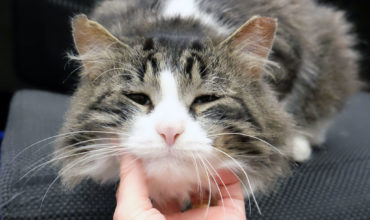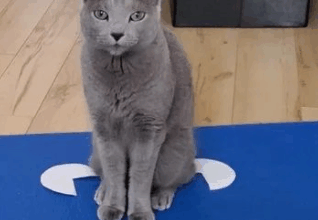As people are increasingly going back to the office, many dog parents are concerned about their pet experiencing separation anxiety. Here's the good news.
Read More
Archives for Behavior tips
Watering your cat
Is your cat a water hog? Love the running sink even when there's fresh water nearby? Here's why... and what to do about it.
Read More
Winter’s a great time to flirt with your dog
Wondering how to exercise your dog in winter? Try flirting! A flirt pole, that is! Flirt poles are like oversized cat wand toys with a fleece or plush toy at the end. And dogs go bonkers for them!
Read More
How to meet a cat
We know the rules on how to meet a dog we don’t know. But what about cats?
Read More
How to improve your relationship with your cat
Cat guru Jackson Galaxy recently spoke about some ways to live the best life with your beloved cat, and his tips are a great place to start when thinking of how to have a really great relationship with your cat.
Read More
Holidays not so fun for your pup?
Many of the “pandemic puppies” who were adopted since March 2020 may be experiencing their first holidays with larger family get-togethers this year now that vaccines are more widespread.
Read More
Training your… cat?
More and more, cat owners are understanding that there’s more to living with a cat than just caring for their physical needs. The word is out that cats love training and that their emotional needs are just as important.
Read More
What “fine” looks like
When we say our pets are “fine,” we need to explain what “fine” looks like. Animals can have different fear responses, which include the well-known “fight or flight” behaviors, but also “fret” and “freeze.”
Read More
If I fits, I sits… even in tape?
Most cat owners are aware that their cats LOVE boxes. The phrase “if I fits, I sits” is something every cat owner is aware of and we all delight in seeing our cats shove themselves into even the tiniest of boxes. We know that cats love boxes because they feel enclosed, safe and warm, and that even big cats in captivity will put themselves into boxes placed in their enclosures. Did you know, though, that if you tape a square onto the floor, it’s likely that your cat will put himself into that 2D square? Even more mind bending is
Read More
Why all the barking?
“How do I stop my dog from barking?” is a common question trainers get. To answer that, the first things we need to know are 1) in what type of situations is your dog barking, and 2) what need are they trying to meet? Dogs bark for a lot of reasons: boredom, fear, attention, excitement, etc. In any of these cases, the focus shouldn’t be on stopping the behavior, but instead, thinking about meeting the dog’s need before the barking starts. For good tips on addressing different types of barking, check out this blog post: https://positively.com/dog-behavior/nuisance-behaviors/barking/ Avoid devices or methods
Read More













